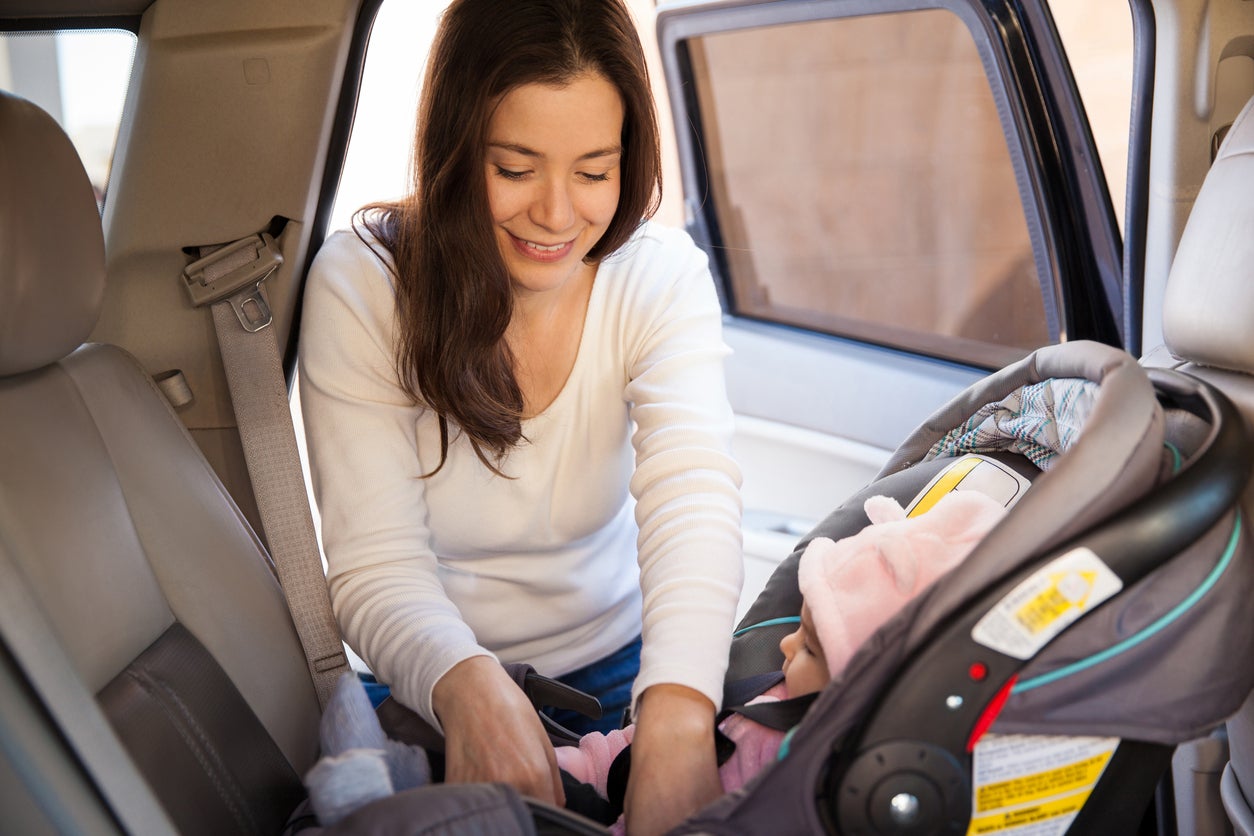
According to I’m Safe, motor vehicle crashes take the lives of more than 12 children every week in the US. In 1985, New Mexico held the highest fatality rate in the United States. After many safety initiatives and policies, New Mexico now ranks 13th in traffic fatalities.
There are many questions about car seats: Which one is the safest? Does it need to attach to my stroller? Does this color go with my car? Why are there so many types and brands? However, there is no question that car seats save lives and a properly installed car seats can save more lives.
Here are some ways to keep your small one safe in a car seat:
Verify the weight and size limit of your car seat matches the size and weight of your child. Children who are placed into seats that are either too small or too big are at risk for injury from lack of proper support in a collision.
Not too tight! Not too loose! For your child or for the seat’s attachments to the car. Child harness straps should be at or below shoulder level in a rear-facing seat. Since children grow quickly, you need to check the shoulder straps regularly. The chest clip should be moved up to armpit level for proper positioning. If the chest clip is too high, it can interfere with breathing and if it’s too low, it will not keep the child in the seat during a crash. Most seats have built-in recline indicators to help you position the seat at the best angle for your child. Car attachment straps should be snuggled so it moves less than one inch to the sides and towards the front of the vehicle.
Infants and toddlers must ride in a rear-facing seat as long as possible. The American Academy of Pediatrics recommends keeping the seat rear-facing until your child is at least two years old or the recommended height and weight of the seat’s limits. It is okay for your child’s legs to bend in a rear-facing seat.
Always read the owner’s manual of the car seat. Even car seat technicians will read the owner’s manual. No parent will automatically know the best way to install a car seat. Follow the instructions provided to you and take the time to install the car seat properly.
Multiple cars? If you move the seat back and forth between vehicles, practice installing the car seat in each car you use. Every car is different, so practicing and learning can create confidence and muscle memory. If this is too difficult, considering buying two car seats.
Register your car seat with the manufacturer. This allows the company who made your seat to contact you directly if there is a safety concern or recall with your seat model. Many companies will not take back an unregistered seat as part of their free exchange program if there is a recall.
Remove your child’s extra coats and sweaters while in the car seat. Winter coats worn in a car seat pose hidden danger. Read our blog here about winter coats as a risk factor of unintentional vehicle injuries.
Attend a car seat clinic. Trained and nationally-certified car seat technicians volunteer at car seat clinics to properly check car seats and educate families on proper installation. Click here to learn more and find a clinic near you.
Buckle up, parents! You are your child’s role model and they watch everything you do. If you buckle your seat belt, kids will understand the importance of safety and in the future, will buckle up as well.
You can prevent unintentional car seat injuries. Most importantly, remember to buckle up!
For more information about community resources, contact Labor of Love at 505.727.7677.
Written by Mia Di Ienno, CNA, Health Education Student and Kym Halliday Clear RN, Manager of Outpatient Programs, Lovelace Women’s Hospital.
This information was provided by Safer New Mexico Now and I’m Safe!




